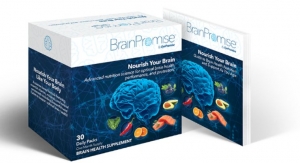05.12.20
In a study published in the journal Biomolecules, diabetic rats that received oral supplementation of EVNol, a palm tocotrienol complex, had statistically lowered severity in diabetes-caused retinal degeneration.
Diabetic retinopathy is now the leading cause of new onset blindness among individuals between the ages of 20 and 64. In the study, diabetic rats were divided into two treatment groups- an oral treatment group and a topical treatment group. The oral group received 100mg/kg of EVNol, and the topical group received a .03% microemulsion formulation of EVNol.
Indicators of retinal degeneration in DR include reduction of RLT (retinal layer thickness), and retinal cell count, and also an increase in retinal cell apoptosis. After 12 weeks of treatment, researchers conducted morphological and biochemical analysis on the rat’s eyeballs. The thickness of all retinal layers was significantly lesser in diabetic rats compared to control rats, indicating that retinal degeneration had occurred. However, in the oral EVNol treatment group, the thickness of the retina was significantly greater compared to the corresponding diabetic control groups.
In terms of retinal cell count and retinal cell apoptosis, a significantly lower numer of apoptotic cells were observed in the ganglion cell layer of the oral EVNol group compared to the corresponding diabetic control group. Significantly greater retinal cell counts were observed in the oral EVNol group, as well.
The study also measured the expression of vascular endothelial growth factor (VEGF). One of the important pathological features of DR is angiogenesis. Increased expression of VEGF, an angiogenic protein, is associated with diabetes-induced oxidative stress and neurodegeneration. Significantly lower retinal VEGF expression was observed in diabetic rats treated with EVNol orally-administered, as compared to the diabetic rats without treatment.
The topical treatment of EVNol did not show as much efficacy as the oral treatment, indicating that oral tocotrienols likely work by penetrating the blood-brain barrier to exert effect on the retina. Topical applications of EVNol have poor penetration, which researchers attributed to multiple anatomical and physiological barriers to reach the retina.
“It is vital to search for the right remedy to help delay diabetic complications, such as diabetic retinopathy,” Bryan See, business development manager of ExcelVite said. “This is the first study to demonstrate the effect of EVNol against STZ-induced diabetic retinopathy in rats. I’m pleased to read that the effect is primarily prominent and significant with oral ingestion of EVNol.”
“This result ties with the previous two human studies conducted on EVNol SupraBio for diabetic nephropathy, another type of diabetic complication,” See continued. “With more scientific evidence from various researchers worldwide, EVNol and EVNol SupraBio could be the adjuvant therapy for diabetic complications.”
Diabetic retinopathy is now the leading cause of new onset blindness among individuals between the ages of 20 and 64. In the study, diabetic rats were divided into two treatment groups- an oral treatment group and a topical treatment group. The oral group received 100mg/kg of EVNol, and the topical group received a .03% microemulsion formulation of EVNol.
Indicators of retinal degeneration in DR include reduction of RLT (retinal layer thickness), and retinal cell count, and also an increase in retinal cell apoptosis. After 12 weeks of treatment, researchers conducted morphological and biochemical analysis on the rat’s eyeballs. The thickness of all retinal layers was significantly lesser in diabetic rats compared to control rats, indicating that retinal degeneration had occurred. However, in the oral EVNol treatment group, the thickness of the retina was significantly greater compared to the corresponding diabetic control groups.
In terms of retinal cell count and retinal cell apoptosis, a significantly lower numer of apoptotic cells were observed in the ganglion cell layer of the oral EVNol group compared to the corresponding diabetic control group. Significantly greater retinal cell counts were observed in the oral EVNol group, as well.
The study also measured the expression of vascular endothelial growth factor (VEGF). One of the important pathological features of DR is angiogenesis. Increased expression of VEGF, an angiogenic protein, is associated with diabetes-induced oxidative stress and neurodegeneration. Significantly lower retinal VEGF expression was observed in diabetic rats treated with EVNol orally-administered, as compared to the diabetic rats without treatment.
The topical treatment of EVNol did not show as much efficacy as the oral treatment, indicating that oral tocotrienols likely work by penetrating the blood-brain barrier to exert effect on the retina. Topical applications of EVNol have poor penetration, which researchers attributed to multiple anatomical and physiological barriers to reach the retina.
“It is vital to search for the right remedy to help delay diabetic complications, such as diabetic retinopathy,” Bryan See, business development manager of ExcelVite said. “This is the first study to demonstrate the effect of EVNol against STZ-induced diabetic retinopathy in rats. I’m pleased to read that the effect is primarily prominent and significant with oral ingestion of EVNol.”
“This result ties with the previous two human studies conducted on EVNol SupraBio for diabetic nephropathy, another type of diabetic complication,” See continued. “With more scientific evidence from various researchers worldwide, EVNol and EVNol SupraBio could be the adjuvant therapy for diabetic complications.”


























